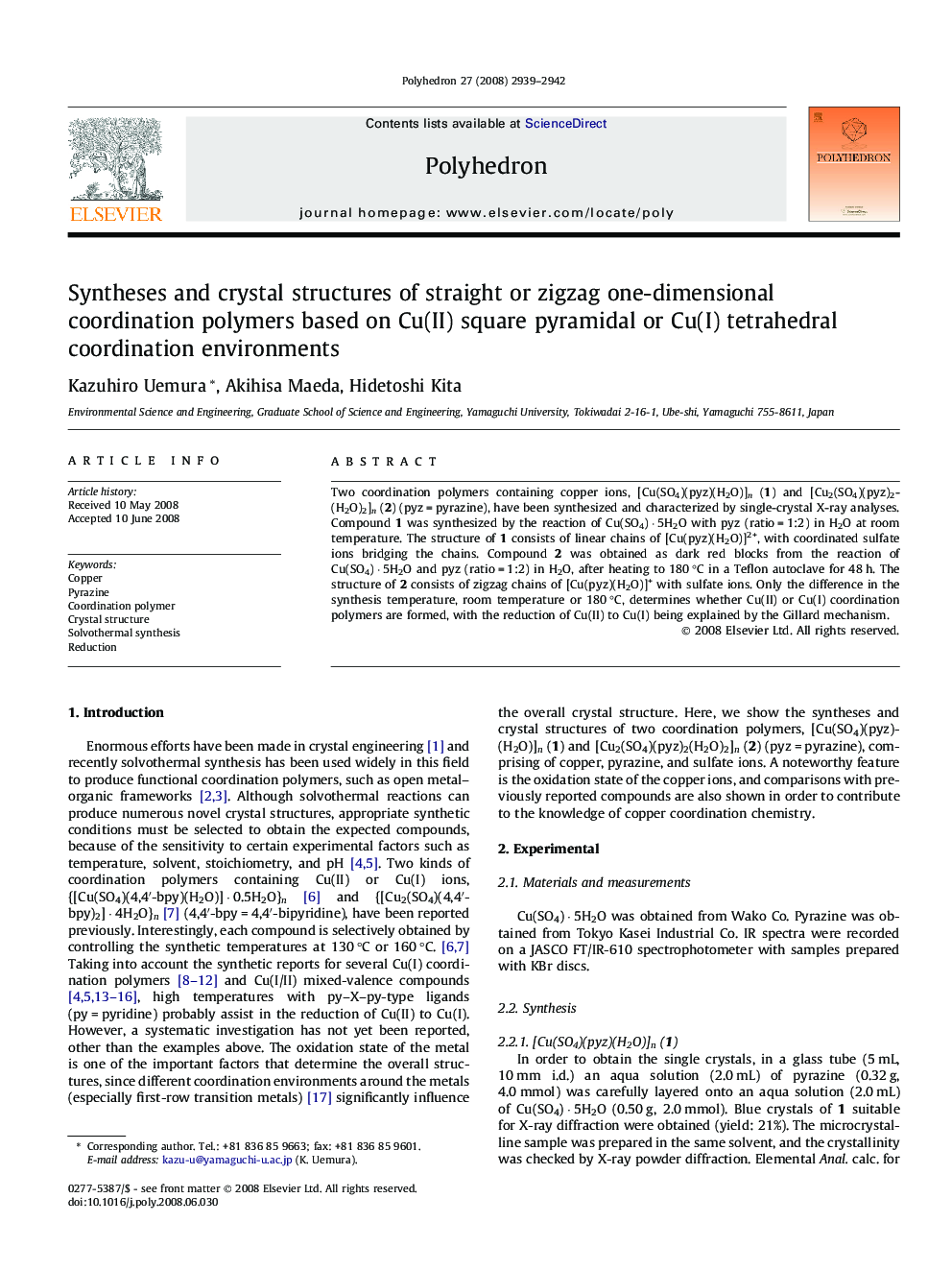| Article ID | Journal | Published Year | Pages | File Type |
|---|---|---|---|---|
| 1340360 | Polyhedron | 2008 | 4 Pages |
Two coordination polymers containing copper ions, [Cu(SO4)(pyz)(H2O)]n (1) and [Cu2(SO4)(pyz)2(H2O)2]n (2) (pyz = pyrazine), have been synthesized and characterized by single-crystal X-ray analyses. Compound 1 was synthesized by the reaction of Cu(SO4) · 5H2O with pyz (ratio = 1:2) in H2O at room temperature. The structure of 1 consists of linear chains of [Cu(pyz)(H2O)]2+, with coordinated sulfate ions bridging the chains. Compound 2 was obtained as dark red blocks from the reaction of Cu(SO4) · 5H2O and pyz (ratio = 1:2) in H2O, after heating to 180 °C in a Teflon autoclave for 48 h. The structure of 2 consists of zigzag chains of [Cu(pyz)(H2O)]+ with sulfate ions. Only the difference in the synthesis temperature, room temperature or 180 °C, determines whether Cu(II) or Cu(I) coordination polymers are formed, with the reduction of Cu(II) to Cu(I) being explained by the Gillard mechanism.
Graphical abstractTwo copper coordination polymers, [Cu(SO4)(pyz)(H2O)]n (1) and [Cu2(SO4)(pyz)2(H2O)2]n (2) (pyz = pyrazine), have been synthesized in H2O at different temperatures, and characterized by single X-ray analyses. Compounds 1 and 2 form one-dimensional chains with straight or zigzag configurations, which are attributed to their respective oxidation states, i.e., Cu(II) and Cu(I).Figure optionsDownload full-size imageDownload as PowerPoint slide
